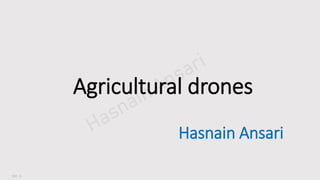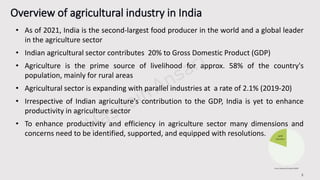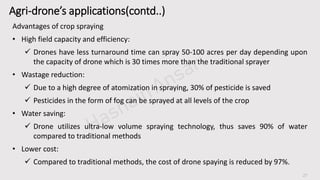This document discusses the use of agricultural drones in India. It begins with an overview of the importance of agriculture to the Indian economy and population. It then discusses how precision agriculture and drone technology can help enhance productivity and efficiency by providing accurate field data. The document outlines the various sensor technologies used on agri-drones and their applications, which include soil and crop monitoring, precision spraying, irrigation management, and mapping. The benefits of agri-drones are higher yields, reduced costs and pesticide use, and improved decision making. Challenges to adoption include system and technology issues.















































